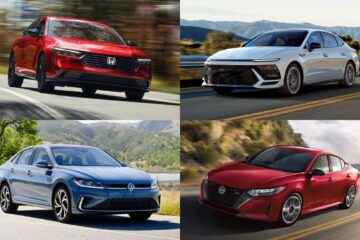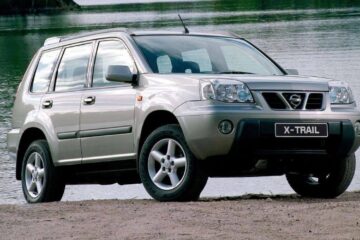The way V8 engines were made changed when Ford made its 4.6-liter 2-valve engine. It caused some remarkable changes to the Mustang, Crown Victoria, and F-150 in the early 1990s. The car was faster, used less gas, and polluted less with this new engine. People who love cars and drive quickly became fans of it. Many Ford cars have had the 4.6 2V engine for decades because it is stable and can be used in many settings.
It can be used in many cars and trucks, so the Ford 4.6 engine is helpful in both. Because it ran so well and was so stable, it changed Ford’s range in the late 1990s and early 2000s. With this adjustable engine, all cars have the same amount of power, and the ride is smooth. The adaptability and Popularity of the 4.6 engine helped Ford’s success, and it had an impact on the car business that would last for a long time.
The Ford 4.6 2V engine, which was taken off the market in 2014, changed the past of cars. The history of the V8 is used in new flexible designs. This engine was an essential part of Ford’s lineup because it worked well, lasted a long time, and could be used in a variety of situations. The 4.6’s effect on the industry keeps showing how important and new it is.
| Model | Production Years | Engine Options | Notable Features |
| Ford Mustang GT | 1996-2004 | V8 | High performance, sporty design, popular among enthusiasts |
| Ford Crown Victoria | 1991-2003 | V8 | Known for durability, commonly used as police and taxi vehicles |
| Ford Expedition | 1997-2002 | V8 | Full-size SUV, spacious interior, off-road capability |
| Ford F-150 | 1997-2003 | V6,V8 | Best-selling truck, versatile, strong towing capacity |
| Ford Explorer | 1996-2001 | V6,V8 | Mid-size SUV, popular family vehicle, off-road capability |
Overview of the 4.6 2V Engine
Ford is proud to offer the 4.6 2V, a 2-valve V8 engine with 4.6 liters of power. This engine has 16 valves, two in each cylinder, and they are all controlled by one overhead cam. Different years and types of use can change how much power it has (190 to 260 hp and 260 to 302 lb-ft). Some people say that Ford’s 4.6-liter 2V engine is always ready to do any job.
Two-valve engines are suitable for drivers who want dependability and low costs. Their simple form cuts down on parts, which makes upkeep easy and quick. Even though they don’t have 4-valve engines, they have a lot of low-end power for fast movement. Because they work well and use little gas, these engines are significant for people who want to save money. 2-valve engines are stable and don’t cost a lot because they use simple tech. Sometimes, it’s better to have more accessible car designs.
A Ford gem, the 4.6 2V engine is used in Mustang GTs, Crown Victorias, Ford Expedition, Ford F-150. Because it can be changed, it’s great for both regular rides and high-performance jobs. Car fans like it because it’s well-built, and there are a lot of extra options for making it more powerful. This solid engine has made a long impact on American roads, powering both muscle cars and high-end sedans.
The modular V8 Ford 4.6 2V engine is a lot like its 3-valve and 4-valve brothers in a lot of ways. Using standard parts, this new design cuts costs and makes production more accessible. Because they last a long time and can be used in many situations, Ford has had these engines for more than 20 years. Because they are flexible and last a long time, they are famous for many Ford family uses.
#1. 1996–2004 Ford Mustang GT
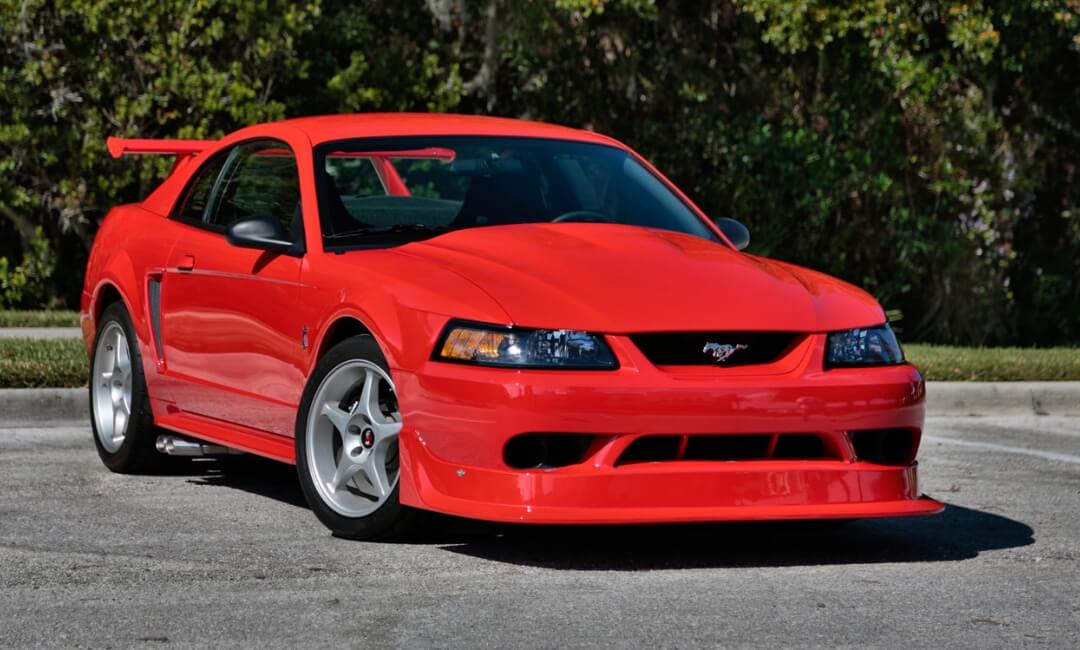
From 1996 to 2004, the Mustang GT had a 4.6-liter solid 2V engine. The 5.0-liter V8 went slower and used more gas. The 260 and 302 hp come from newer types. The first one had 285 lb-ft of power and 215 hp. It was solid and easy to keep up because each cylinder had two valves, and the engine had a single overhead camshaft (SOHC). The Mustang came back to life with this strong engine.
Ford chose the 4.6 2V engine to bring the Mustang GT up to date. Cross-bolted mains and strong metal heads improved performance without adding weight. The design of the engine allowed for future improvements and met stricter pollution rules. Because it uses little gas, it’s a good choice for the Mustang if you care about the environment.
A lot of Mustang GT drivers loved how smooth and reliable the 4.6 2V engine was. Car fans liked how easy it was to improve its performance. The Mustang GT was a solid and valuable sports car, thanks to that engine. In the late 1990s and early 2000s, it was famous because it looked like a classic power car but had modern features. The Mustang GT from that time with that engine is still a favorite among car fans because it looks great and performs very well.
#2. 1991–2003 Ford Crown Victoria
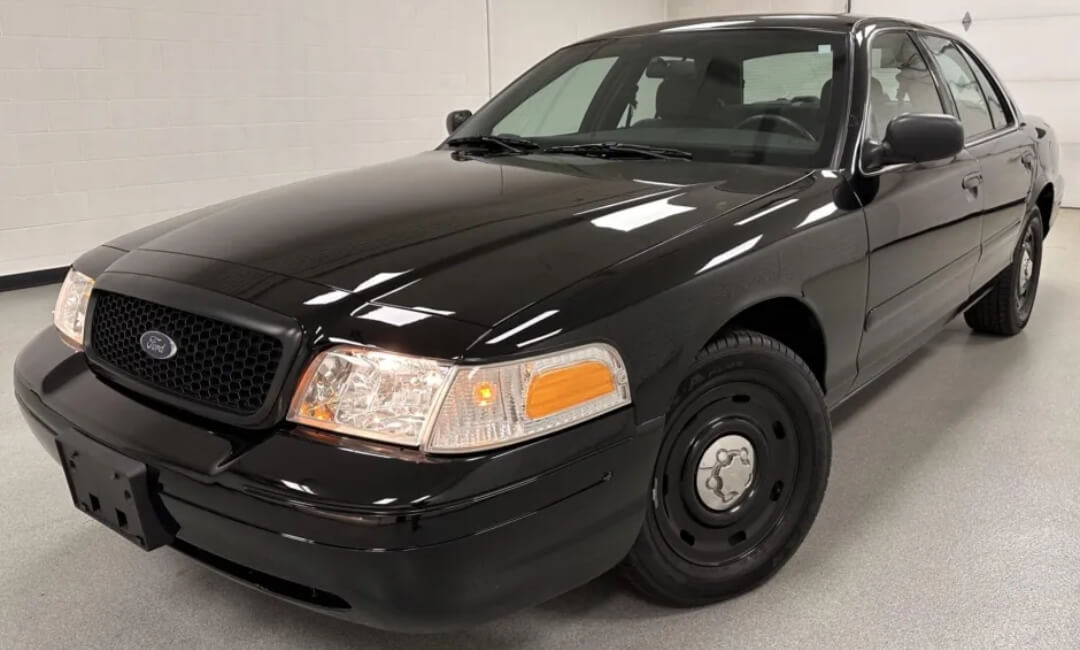
From 1991 to 2003, police and security used these cars. The 4.6L 2V V8 could use a lot of gas. Taxis and police cars had to be stable. If you take good care of them, they could go up to 250,000 kilometers. It was possible to drive between 300,000 and 400,000 Crown Vics. This shows that V8 is potent. The best engines make it the best in its class.
The cops liked how reliable and cheap the 4.6L engine was. There were some spark plug blowouts and oil leaks, but most of the problems could have been avoided with regular upkeep. Because it had a SOHC design, it could handle both fast chases and long periods of rest. This engine didn’t need much maintenance, so it worked well for police work and kept repair costs low.
The Crown Victoria’s 4.6L engine is reliable and is liked by fleet managers and cops. Owners praise how smoothly it works and how stable the power is after years of use. The car is built to last because it has a body-on-frame design and a solid engine. This mix helps it handle challenging situations and a lot of users like how it always works well for a long time.
#3. 1997–2002 Ford Expedition
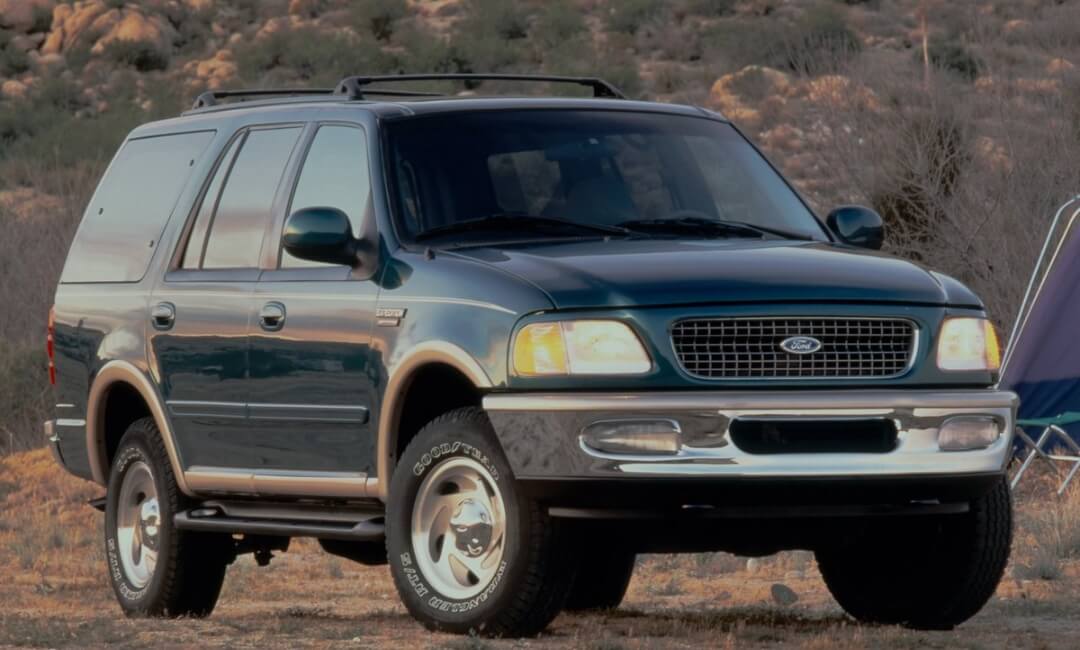
From 1997 to 2002, Ford Expeditions could be driven every day or on exciting trips. It can pull 6,300 pounds with its 4.6L V8 engine, which makes 240 hp and 293 lb-ft of torque. This SUV can draw cars, boats, and camping stuff. Ford’s innovative design makes travel better by making it more robust and more efficient. The Expedition can handle long trips on the road and off-roading. It’s strong enough and can be used in many ways.
The Ford Expedition is excellent off-road thanks to its strong 4.6L V8 engine. A strong engine and innovative drive make it easy to get through rough terrain. To control rough terrain, you need constant power, which is what this design gives you. The Expedition does very well in rough conditions and on hilly ground. So, you can trust this off-road car.
With 18 MPG, the Expedition’s 4.6L V8 engine is a good mix of speed and fuel economy. It’s not a record, but this number is excellent for full-size SUVs. They can get great results without having to pay a lot at the gas station. The fuel economy of the engine, while not the main focus, adds to the value of this versatile vehicle. Ford’s technical skills are apparent from the fact that it runs smoothly and uses little gas for its size.
#4. 1997–2003 Ford F-150

From 1997 to 2003, Ford F-150s and other light-duty cars were great. Gasoline powers the powerful 4.6 2V V8. The 220 hp, 290 lb-ft engine in this car can pull big things and get you around town every day. Because it was strong and could do many things, the F-150 was famous for more than ten years.
The F-150’s 4.6 2V engine stands out because it has a single overhead valve. Drivers love how powerful and fuel-efficient its new form is. Its balanced square shape cuts down on noise and shaking, making the ride more comfortable. Fleet managers and owners like how smooth the engine is and how little upkeep it needs. The intelligent engineering in this engine makes it a safe pickup that moves well.
The 4.6 V8 is excellent for both work and fun because it can be used in a variety of situations. Because it is built well, it can pull 6,800 pounds and carry 1,500 pounds. Because it has a lot of low-end power, the engine is fantastic for hauling and pulling. The V8 is a trusted partner at work or on a trip over the weekend.
#5. 1996-2001 Ford Explorer
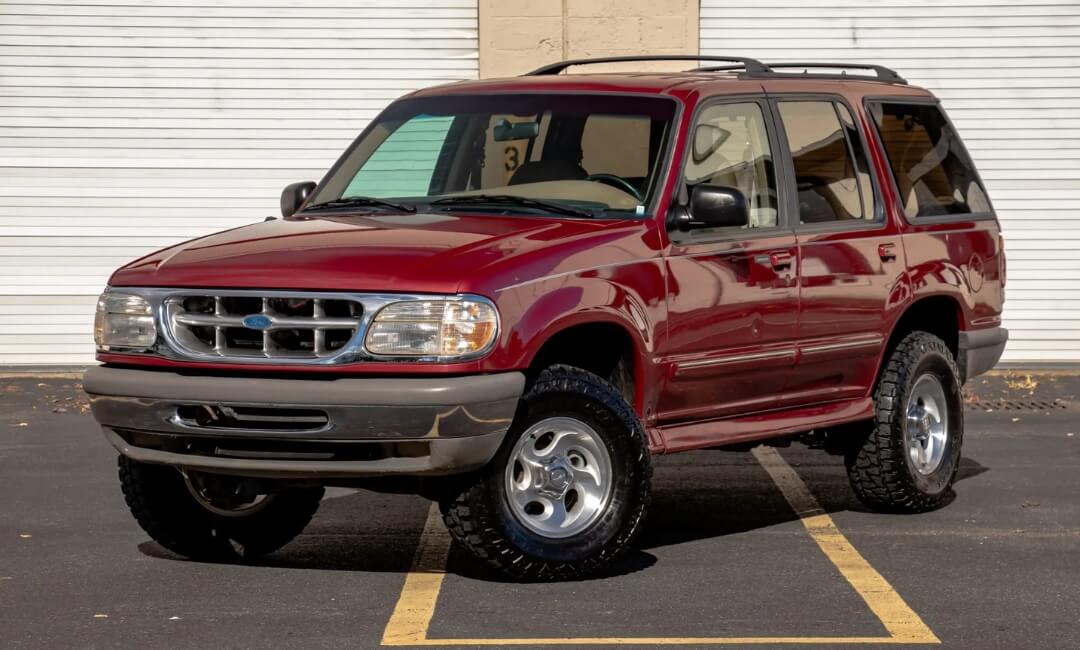
When the Explorer went from being a rough start to a famous family car, SUVs got better. It had a 5.0L V8 engine that made 210 hp and 280 lb-ft of power. People on hikes liked that it could go off-road and pull things, and families liked how comfortable it was. From 1996 to 2001, Ford’s five-seater was a hit because it was valuable and beautiful. This car was easy to switch between for work and weekend fun, making it great for a lot of different types of people.
It changed how SUVs were made when it came out in 1996–2001. It was easier to ride on roads and rough trails because it had a tremendous rear balance. In 1997, all-wheel drive was added to make it more stable and help it move better. The Explorer was the safest car ever made. It had two airbags and antilock brakes. The Explorer was very secure, moved well, and did well in a range of settings. This made drivers feel safe and confident.
The Explorer cabin is made to be comfy and simple to use. People who like to go on road trips and people who love being outside can use the oversized cargo area to load up and go on new experiences. Today’s conveniences, like power windows, air conditioning, and good sound systems, make every trip fun. The type from 1996 to 2001 lasts a long time because it is made of solid materials. It’s great for families who want to enjoy the woods because the house is made to last.
Read More:
- Top 10 Cheapest Cars With V12 Engines in 2024
- Dodge FWD 3.8 V6 vs. Dodge RWD 3.8 V6: A Complete Comparison Guide
- Shelby F-150 gets supercharged Coyote V8 to make 785 HP performance revealed
Why Ford Phased Out the 4.6 2V Engine
As car technology got better, Ford’s solid 4.6 2V engine had trouble keeping up. This engine from the early 1990s had a good track record, but it didn’t meet today’s standards. Stricter rules on pollution make it complicated and expensive to replace the older engine. At the same time, competitors came out with better and more valuable options. Ford did something when the company realized that changes were needed. To stay competitive, Ford came up with new technologies that were better and had more power, but the 4.6 2V was still great.
The progress Ford has made in engine manufacturing is impressive and exciting. With the 4.6 3-valve engine, airflow and burning got better, which made cars more fuel-efficient. The 5.0 Coyote engine, on the other hand, made things better. The Coyote engine has more compression, dual overhead cams, and variable valve timing, which make it very powerful and suitable for gas. It did better than the 4.6 2V and produced less pollution. Ford’s careful improvements show that it understands what people want in a modern car.
Ford always pays attention to what its customers say. The engines have been made better because customers wanted more speed and better gas mileage. The 5.0 Coyote engine is popular because it works well and can be changed to meet different needs. This change has saved Ford money and helped the earth all over the world. Ford got rid of the 4.6 2V engine in favor of new technology because users and the government both wanted them to. To keep up with the times, Ford has found a way to be fast and good for the environment.
Legacy and Popularity of the 4.6 2V Engine
In the history of cars, the Ford 4.6 2V engine stands out. Since the early 1990s, this engine has been praised for being well-built and easy to keep up with. It’s wild that many units quickly go over 200,000 miles! Its simple form makes workers and users happy because it’s easy for them to find new parts. The 4.6 2V engine powers both the stylish Mustang and the reliable Crown Victoria, showing how versatile it is. The American car culture is shaped by cars that are very reliable and flexible.
A lot of fans like the 4.6 V8 because it can be upgraded. Fans of the Mustang love the mix between power and dependability, and they often make changes to it to get better performance. Police and cab drivers like how long-lasting Crown Victoria is and how well-kept it is. This engine continues to bring together people who love power cars and people who run fleets.
Car fans like Ford’s 4.6 2V engine. Many people like it because it has been around for a long time and always works—fans like making it stronger or keeping it that way. The success of the engine and the enthusiasm of its groups make it attractive. This connection protects its history as an automaker.
Conclusion
Between the Mustang and F-150 is a 4.6 2V V8 engine that gives them different looks and feels. It has mixed new technology with classic style since the early 1990s. A lot of car fans like how long-lasting and reliable it is. The 4.6 2 V’s smooth power and long life make it a favorite among speed fans and hard-working drivers. Because it’s flexible, it can be used on both sports cars and trucks. This “all-rounder” engine works well and reliably in a lot of different cars.
The 4.6 2V has a modern look and is reliable, just like all Ford cars. Car fans who like to work on their cars love how simple it is in a world full of complex engines. Even though there are better options now, this V8 is still a good choice because it is easy to maintain and works well. Car fans use it to make their cars faster and to restore old cars. The 4.6 V8 is still used in many everyday cars, which shows how versatile and long-lasting it is.
The 4.6 2V engine stands out because it is versatile. This engine works well in power cars, SUVs, sedans, and SUVs. It’s great for many cars because it’s strong and even. It is clear why so many people believe the engine: it can do a lot of different things. Ford puts the 4.6 2V in a lot of cars, which shows how reliable and powerful it is. It’s well-liked because it can handle any problem.


